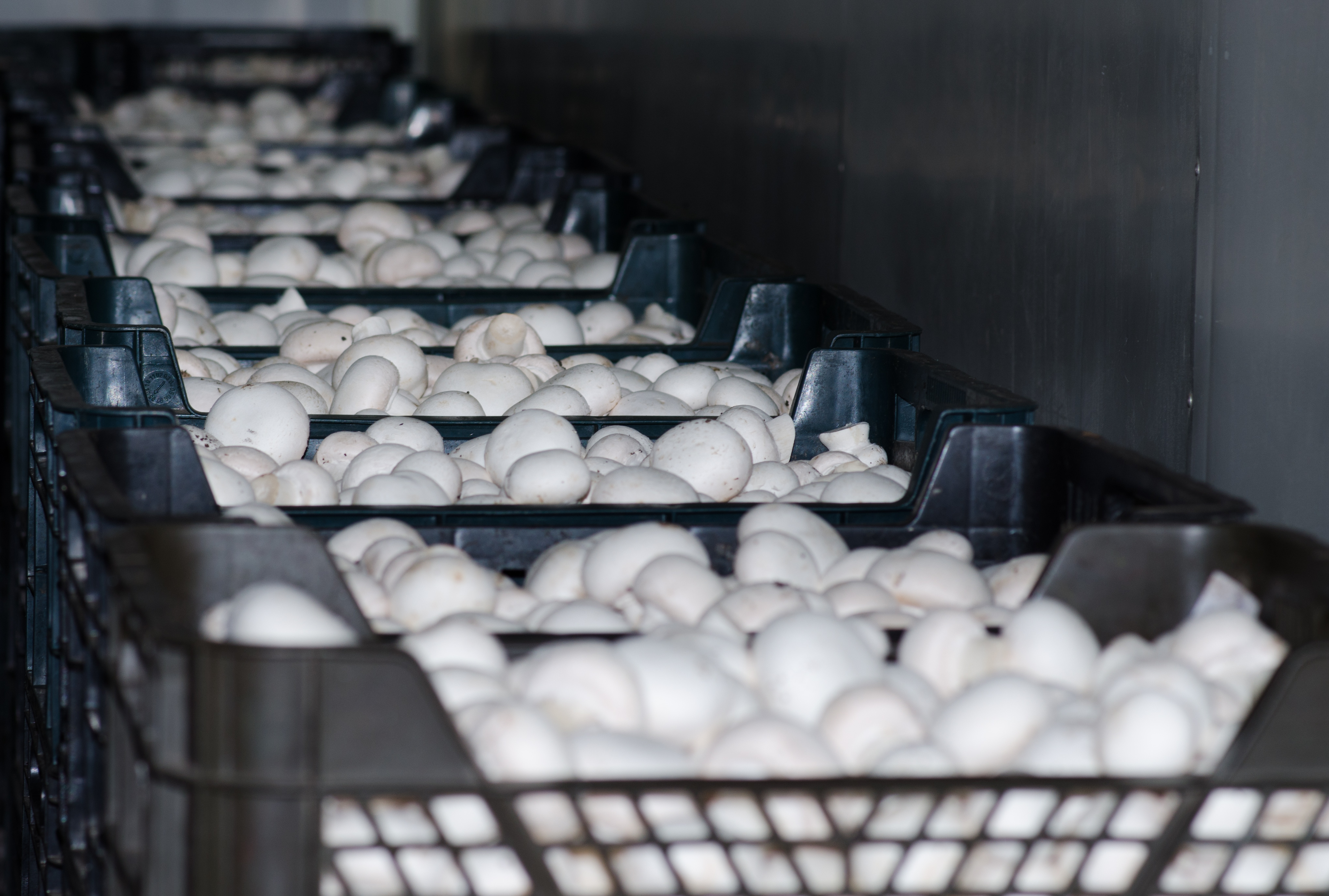Mushroom Harvest, Yields, and Post-Harvest Handling

This post is also available in:
This post is also available in:
![]() हिन्दी (Hindi)
हिन्दी (Hindi)
There is no right time for mushroom harvesting. Broadly speaking, mushroom growing from substrate production to harvest lasts almost 3 months or 20-25 days from seeding. Theoretically, when the fruiting bodies start to appear, they are ready for harvesting. The farmer should remember that 60-75% of the yield is generally harvested from the first two flushes. As a result, the growing conditions should be closely monitored to ensure a good number of pin sets. Of course, it is essential to mention that the higher the pin set, the smaller the produced mushrooms will be (due to competition). Commercial Agarics growers usually lower the temperature by 2 °C (at 14-17 °C or 57-62 °F) 48 hours before harvesting the first and the second flush. In general, the crop will reach completion after 8-10 flushes, with each one to be smaller (less yield) than the previous one. It is crucial to water even during the harvesting period because for every 45,4kg (100 lb) of mushrooms harvested, 41kg (90 lb) of water is removed from the substrate. However, the relative humidity should not exceed the maximum recommended levels because the mushroom caps may become clammy or sticky, decreasing their self-life and quality. Finally, the grower must also ensure good oxygen supply and aeration for the rest of the growing and maturation to proceed smoothly.
The right time for picking the mushrooms mainly depends on the market demands. For example, in the case of the Common mushrooms (Agaricus), if the market demand is great for champignon mushrooms, producers harvest them early when they are still small (2,5-4 cm cap diameter), white, and firm and the cap has not opened. This means that harvesting should be performed more often (daily). On the other hand, if the demand is greater for portobello, the farmers let them grow until they meet portobello size requirements and become more brownish. After they reach the desirable maturation stage, the grower can pick the mushrooms by grasping the page of the stem using a sharp, short-bladed paring knife and cutting it with a twist motion, taking care not to disturb the neighboring pinheads.
As for the yields, they depend on the size of the cultivation and the mushroom species. Producers, in most cases, can harvest up to 4 times the same bag, while in a mushroom bed, 7-10 flushes are expected (for button mushrooms). However, the yields after the first one can be from 50% to 90% smaller. Broadly speaking, for common (Agaricus), an average yield is 15-30g/㎡ or 10-14 kg of mushrooms per 100 kg compost. In Pleurotus mushrooms grown in vertical farming of 1.5-3 hectares, yields can be up to 500 tonnes per year. On the other hand, the same species grown in satellite units of 0.4-0.6 hectares produce up to 70-150 tonnes per year. Common (Agaricus), under the same conditions, can give up to 400-1000 tonnes and 100-200 tonnes per year, respectively.
Preservation of Mushrooms
Harvested mushrooms are very sensitive products. Immediately after harvesting, they should be kept in cool temperatures (max 7 °C or 45 °F) covered containers to protect them from flies, sunlight, and high temperatures, but at the same time, in such a way that proper air circulation is unblocked. Harvested mushrooms should be categorized depending on their size, packed in breathable pulp trays (for better aeration), and shipped to the market as soon as possible to prevent quality reductions. When stored in breathable packaging and refrigerated, they can be preserved for up to 7-10 days, while when packed in special bags (same temperature), they can last 3-4 days. If they are not marketed as fresh products, mushrooms can be preserved by drying (soon after harvesting), canning, or freezing (after dehydrating them, freeze-drying).
Further reading
15 Interesting Facts About Mushrooms
Mushrooms: Information, Nutritional Value and Health Benefits
How to Easily Grow Mushrooms at Home
How to Start a Mushroom Farm for Profit
Mushroom Biological Cycle and Growing Requirements
Where can I grow Mushrooms – Mushroom facilities & equipment
Growing Media/ Substrates for Mushroom Cultivation
How to Produce Composted Substrate for Mushroom Cultivation
Mushroom Harvest, Yields, and Post-Harvest Handling
References
- https://www.americanmushroom.org/industry-resources/how-mushrooms-grow/
- https://library.uniteddiversity.coop/Permaculture/Mushroom_Cultivator-A_Practical_Guide_to_Growing_Mushrooms_at_Home.pdf
- https://extension.psu.edu/six-steps-to-mushroom-farming
- https://fsi.colostate.edu/mushrooms/#production
- https://nhb.gov.in/report_files/button_mushroom/button%20mushroom.htm









































































